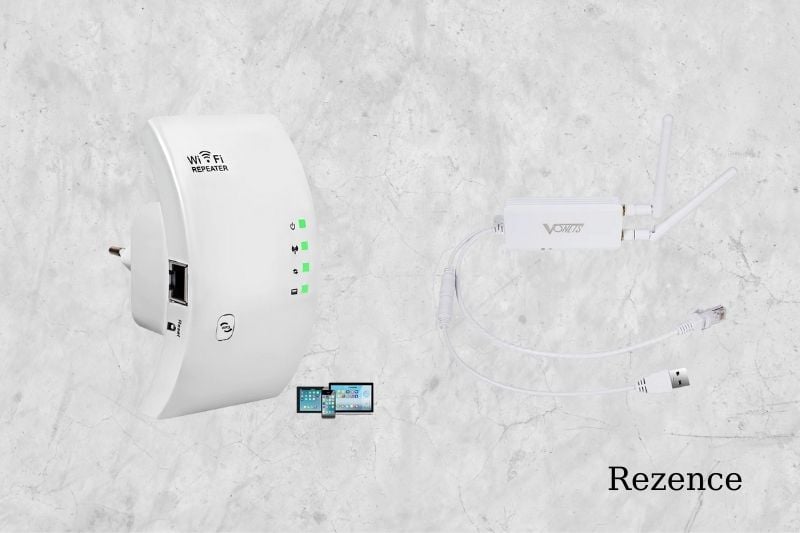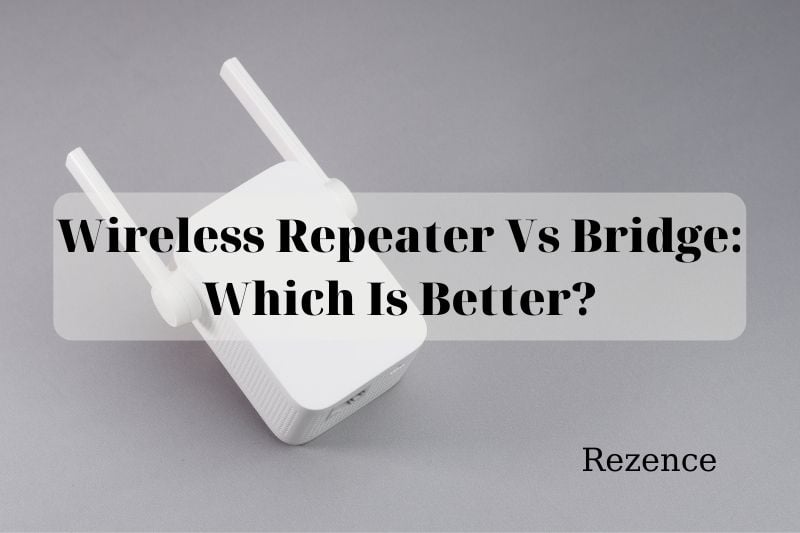Imagine yourself working from home, finally settling into your cozy corner in the garden. You open your laptop, eagerly anticipating the day’s tasks, only to be greeted by a dreaded message: “No internet connection.” The frustration mounts, especially if you rely on a stable internet connection for work or leisure. You yearn for a solution, a way to extend the reach of your Wi-Fi signal so you can truly embrace the freedom of working or relaxing anywhere in your home.

Image: www.rezence.com
This is where the power of wireless repeaters and bridges comes in. They are essential tools for expanding your Wi-Fi network, conquering weak signal zones, and ensuring seamless connectivity throughout your home. But before diving into the specifics, let’s define these key terms and understand their crucial roles in the world of wireless networking.
What is a Wireless Repeater?
A wireless repeater, often referred to as a Wi-Fi extender, is essentially a device that amplifies your existing Wi-Fi signal. Picture it as a signal booster for your wireless network. This clever device receives your Wi-Fi signal, strengthens it, and rebroadcasts it to a wider area, expanding the footprint of your network. They are particularly beneficial if you experience dead spots or weak Wi-Fi signals in certain areas of your home, such as the far end of the house, the basement, or your backyard.
How Does a Wireless Repeater Work?
Imagine a wireless repeater as a dedicated courier relaying messages across a mountainous region. The repeater receives a signal from your main router (the source) and then transmits it to another location (the receiver) where the signal might be weak. It essentially acts as a middleman, enhancing the signal strength and ensuring a smooth flow of data across the network.
What is a Wireless Bridge?
A wireless bridge is a device that connects two wired networks together. It works as a gateway, bridging the gap between two separate wired networks, allowing them to communicate seamlessly. While a wireless repeater focuses on extending your existing network, a wireless bridge facilitates communication between different wired networks.
Imagine a wireless bridge as a connector linking two distinct cities. It provides a pathway for communication between these two separate entities, even though they are not directly connected. In the real of wireless networking, a bridge enables communication between two wired networks, even if they are not physically connected.

Image: www.rezence.com
Understanding the Differences: Repeater vs. Bridge
While both repeaters and bridges extend your wireless network, they operate differently and serve distinct purposes. Here’s a clear break down to help you understand their functionalities:
Key Differences:
- Functionality: Wireless repeaters amplify a single Wi-Fi network signal, while wireless bridges connect two different wired networks, often to expand network coverage or to connect to a separate internet connection.
- Signal Strength: Repeaters generally reduce signal strength as they amplify signals, while bridges maintain signal strength by providing a direct connection between two networks.
- Network Complexity: Repeaters work with a single network and do not create a new one, while bridges create a new network, often with a unique name and password.
- Applications: Repeaters are ideal for expanding your existing Wi-Fi network to reach new areas, while bridges are useful for connecting two separate wired networks, extending your network’s reach or accessing a different internet connection.
When to Use a Repeater and When to Use a Bridge:
-
Choose a repeater if:
- You encounter dead zones or weak signal areas in your home.
- You need to extend the coverage of your existing Wi-Fi network.
- You want a simple and straightforward solution for better Wi-Fi connectivity.
Choose a bridge if:
- You need to connect two different wired networks.
- You want to extend your network’s reach by connecting to a different internet connection.
- You want to create a new network with its own unique name and password.
Choosing the Right Wireless Solution:
Selecting the best option depends on your specific needs and the characteristics of your home network. Ask yourself these questions to guide your decision:
- What is the size and layout of your home? A larger, multi-level home might require more extensive network coverage, potentially necessitating the use of multiple repeaters or a bridge depending on your specific needs.
- Where are your devices located? If your primary devices are clustered in one room or a specific location, a single repeater might be sufficient. If devices are spread across different areas, you might need a multi-pronged approach, using a combination of repeaters or bridges.
- What is your budget? Repeaters tend to be more affordable than bridges, but their capabilities might vary. Consider your budget and choose a solution that optimizes cost-effectiveness with functionality.
Expert Tips for Optimizing Your Network:
- Positioning: Strategic placement of your router and repeaters is crucial. Avoid placing your router in a corner or near a large appliance, as these can have an adverse effect on signal strength. Aim for a central location with clear line of sight to your devices.
- Channel Overlap: If multiple devices are connected to the same Wi-Fi network, they can interfere with each other. Use a scanning tool to find the least congested channels and adjust your router’s channel settings accordingly.
- Signal Strength Testing: Test the signal strength in different areas of your home. Use a Wi-Fi analyzer tool or a website such as Wi-Fi Analyzer to identify dead spots and signal strength issues.
- Firmware Updates: Keep your router and repeater firmware up-to-date for optimal security and performance.
Wireless Repeater Vs Bridge
Conclusion
Expanding your Wi-Fi network can significantly enhance your digital experience, offering seamless connectivity throughout your home. Wireless repeaters and bridges are invaluable tools in achieving this goal. By understanding the functionality and differences between these devices and by carefully considering your specific needs, you can make informed decisions, conquer dead zones, and enjoy uninterrupted Wi-Fi connectivity in all areas of your home. Embrace the power of wireless connectivity and unlock a world of possibilities, whether you’re working remotely, streaming your favorite shows, or simply staying connected.





